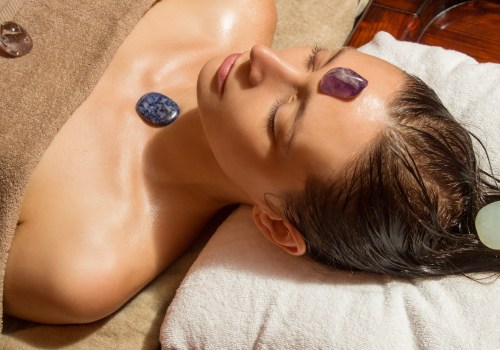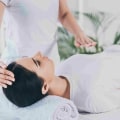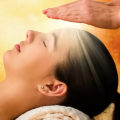The best way to understand Reiki is to see it as our “experienced sense of being alive”.
Reiki therapy
is a soft-touch therapy that involves placing the therapist's or patient's hands in various places on the patient's body to promote relaxation and a sense of calm. Reiki is an energetic healing technique that promotes relaxation, reduces stress and anxiety through gentle touch. Reiki practitioners use their hands to deliver energy to your body, improving the flow and balance of your energy to support healing.Reiki therapy is based on the Eastern belief that vital energy flows through the body. The idea is for a Reiki practitioner to use a gentle touch, or place their hands just above the body, to help guide this energy in a way that promotes balance and healing. Reiki is a complementary health approach in which professionals place their hands on or just above different areas of the body. It is based on the belief in Eastern medicine that living things have energy fields that support their health and vitality.
During a Reiki session, the practitioner places their hands directly on you or just above you to achieve healing. The belief is that the practitioner is able to stimulate their body's natural healing abilities. Reiki is a Japanese spiritual healing technique in which practitioners can help your body heal itself. Dyer acknowledges, however, that some studies have lacked rigor and others have not found statistically significant benefits with Reiki.
According to Robert Graham, MD, a Harvard-trained, board-certified doctor of integrative medicine who runs the FRESH MED integrative health clinic, Reiki is safe and possibly even useful as long as it is used as complementary medicine, not as an alternative. While there is no research to show that the energy field involved in Reiki exists, you may find it relaxing. These areas can be found all over the body, so Reiki practitioners can touch or float above the head, limbs, midsection, and feet. Researchers found that patients who received real reiki showed significantly more improvements than the other group in general, the physical, environmental and social dimensions of quality of life using the Portuguese version of the World Health Organization Quality of Life Survey (WHOQOL-Bref), a tool of research that measures pain and other quality of life problems after undergoing surgery. According to Robert Graham, MD, a Harvard-trained, board-certified doctor of integrative medicine who runs the FRESH MED integrative health clinic, Reiki is safe and possibly even useful as long as it is used as complementary medicine, not as an alternative. While there is no research to show that the energy field involved in Reiki exists, you may find it relaxing. These areas can be found all over the body, so Reiki practitioners can touch or float above the head, limbs, midsection, and feet. Researchers found that patients who received real reiki showed significantly more improvements than the other group in general, the physical, environmental and social dimensions of quality of life using the Portuguese version of the World Health Organization Quality of Life Survey (WHOQOL-Bref), a tool of research that measures pain and other quality of life problems after undergoing surgery.
However, due to the abundance of anti-Japanese and anti-Asian sentiments in the United States around World War II, Takata avoided using the name “reiki” and instead referred to its establishment on the island of Kauai as a “healing study,” according to researcher Nat Newton, Ph. The best-documented benefits of Reiki revolve around the relaxation response, which professionals say invokes the body's natural healing process. Center says research doesn't clearly show Reiki effective for any health-related reason. Graham and Brunius, Reiki is most often used as a solution for people suffering from both physical and mental pain.
Women who underwent Reiki showed improvements in their sleep patterns, self-confidence and levels of depression. Mikao Usui developed reiki in the early 20th century, deriving the term from the Japanese words rei, which means “universal”, and ki, which refers to the vital energy of the life force that flows through all living things. In a typical treatment room setting with a Reiki practitioner and a client, the client starts face up and fully clothed. Reiki uses what is known as universal life force energy, ki or qi to improve people's lives and ailments.
His healing experience was so profound that Takata returned to Hawaii and became the first person to teach Reiki in the West. Even so, the National Center for Complementary and Integrative Health says that most medical research on the possible effects of Reiki is not of high quality and the results are inconsistent. An incredibly simple technique to learn, the ability to use Reiki is not taught in the usual sense, but rather is transferred to the student during a Reiki class. .
.







